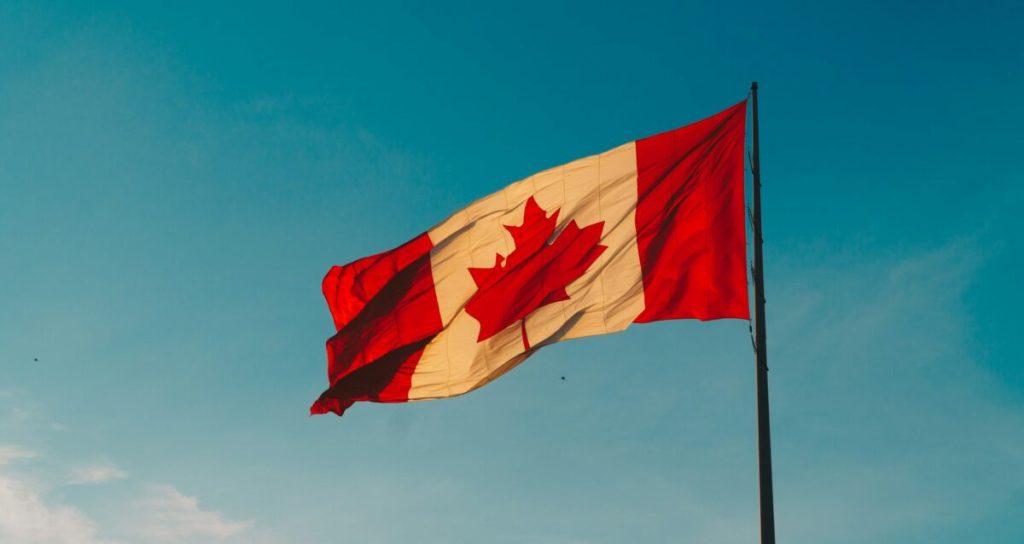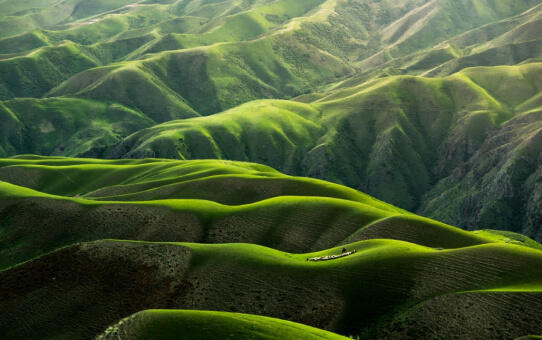
Discover the journey from city skylines to rugged shores across Canada, told through the eyes of a local traveler in love with every mile.
I feel the same jolt of affection every time I leave and return. Canada stretches wide, restless, and packed with details that never repeat. The cities hum, the mountains stand heavy with snow, and the coastlines seem carved by a patient hand. Traveling here is not a quick glance; it is an immersion. I keep circling back to the idea of traveling from city skylines to rugged shores across Canada, because it captures how the country shifts from steel towers to foggy coastal cliffs in a single trip. The scale is enormous, yet the moments feel personal, as if the land itself is speaking to whoever cares enough to listen.
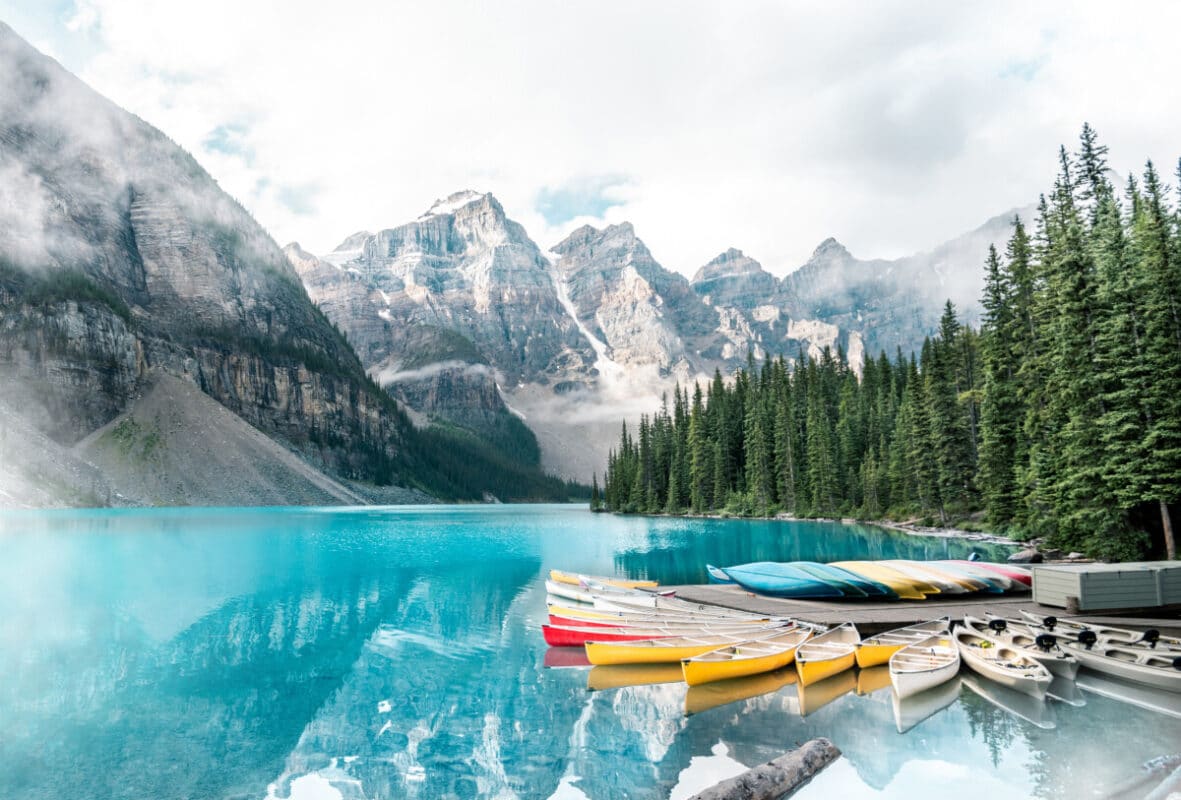
Beautiful Moraine lake in Banff national park, Alberta, Canada. Photo courtesy Adobe Stock
What’s in This Article:
Toggle
Skyscrapers That Feel Alive
Toronto does not sit quietly. The skyline is an exclamation, glass and steel pointing straight up, daring you to find a higher perspective. I have walked those downtown streets in winter when the wind cuts around the corners, and in summer when the sidewalks turn into outdoor patios. The energy is quick, but it holds a rhythm that makes sense. People move purposefully, and the skyline almost seems to guide them.
Montreal tells a different story. The skyline is shorter but louder in character. Old stone churches press against modern office blocks. You smell bagels, smoked meat, and roasted coffee drifting through the air. French and English mix in casual conversation, and somehow, the mix feels seamless. Every building, corner, and mural carries a layer of history. The skyline is less about power and more about identity.
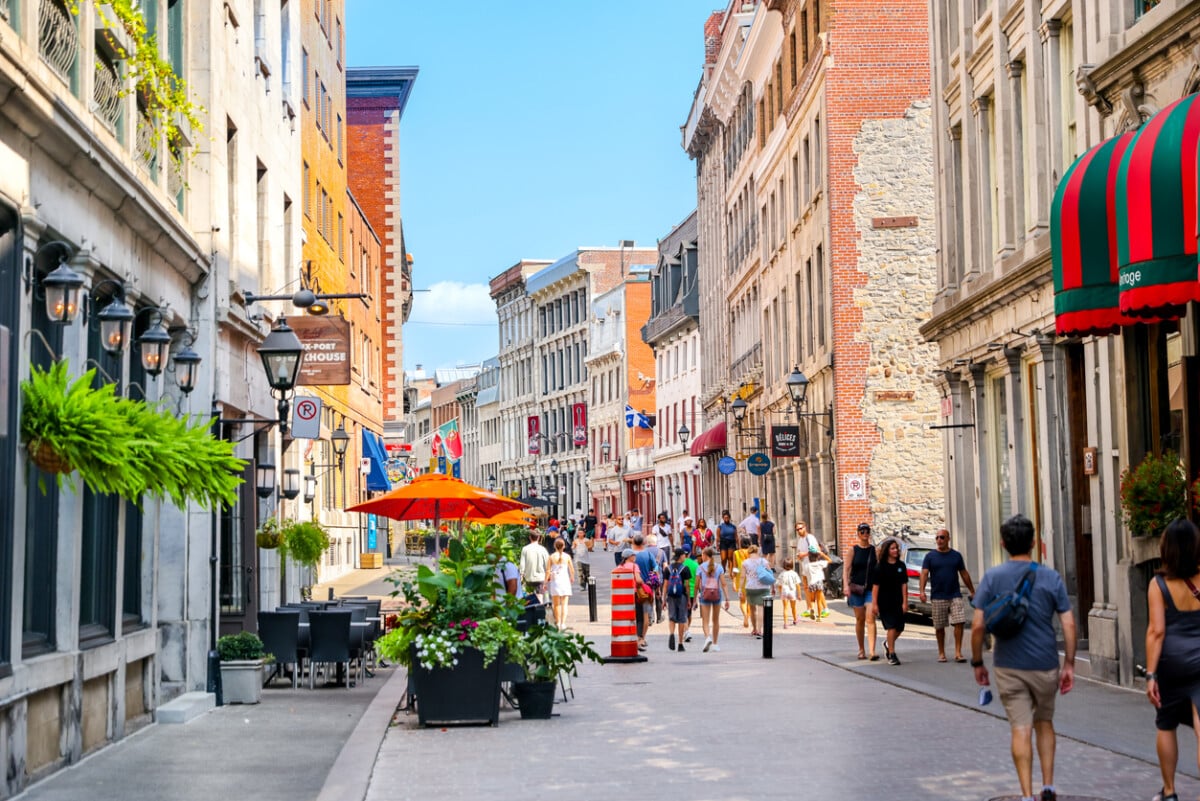
Old Town Montreal is a beautiful city to explore. Photo by todamo via iStock by Getty Images
All the Way West—British Columbia
Vancouver takes the prize for the most surreal view. Mountains rise from the background, pushing the city against the water. Standing at English Bay, the contrast hits hard: glass towers behind you, ocean and snow-dusted peaks ahead. Few places carry that balance so naturally. I have often stood there, thinking how easy it would be to imagine staying in British Columbia for good. Although, of course, the road always called me further.
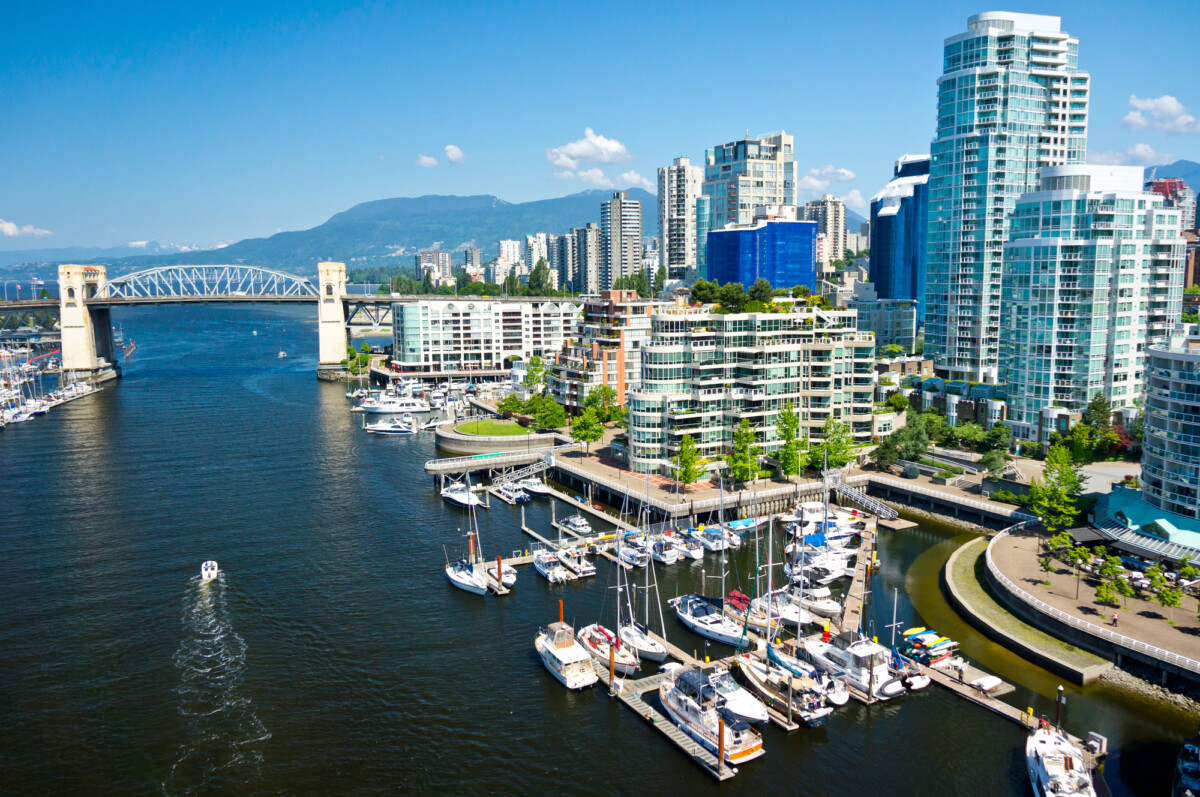
Beautiful view of Vancouver, British Columbia, Canada. Photo by matfron via DepositStock.com
I caught that same feeling once in Victoria, though it leans in from a different angle than Vancouver. The city feels slower, almost like it was built for long afternoons instead of fast mornings. Walking the Inner Harbour, the parliament buildings sit heavy with history, while the water pulls in ferries and kayaks with equal calm. Gardens spill over fences in nearly every neighborhood, and a café always seems to know your name even if it doesn’t. It feels less like a stop and more like a pause, the kind you carry with you after leaving.

Whether you’re drawn to city life or the pull of nature, you’ll find every inch of Canada worth exploring. Photo by Guillaume Jaillet on Unsplash
Roads That Cross an Entire Country
Traveling by car changes everything. Canada is a country of highways that run for hours without pause. Out west, the Trans-Canada Highway climbs and dips through the Rockies. Lakes flash blue between the trees, and sometimes a bear will step out near the shoulder, calm as if the asphalt was built for it.
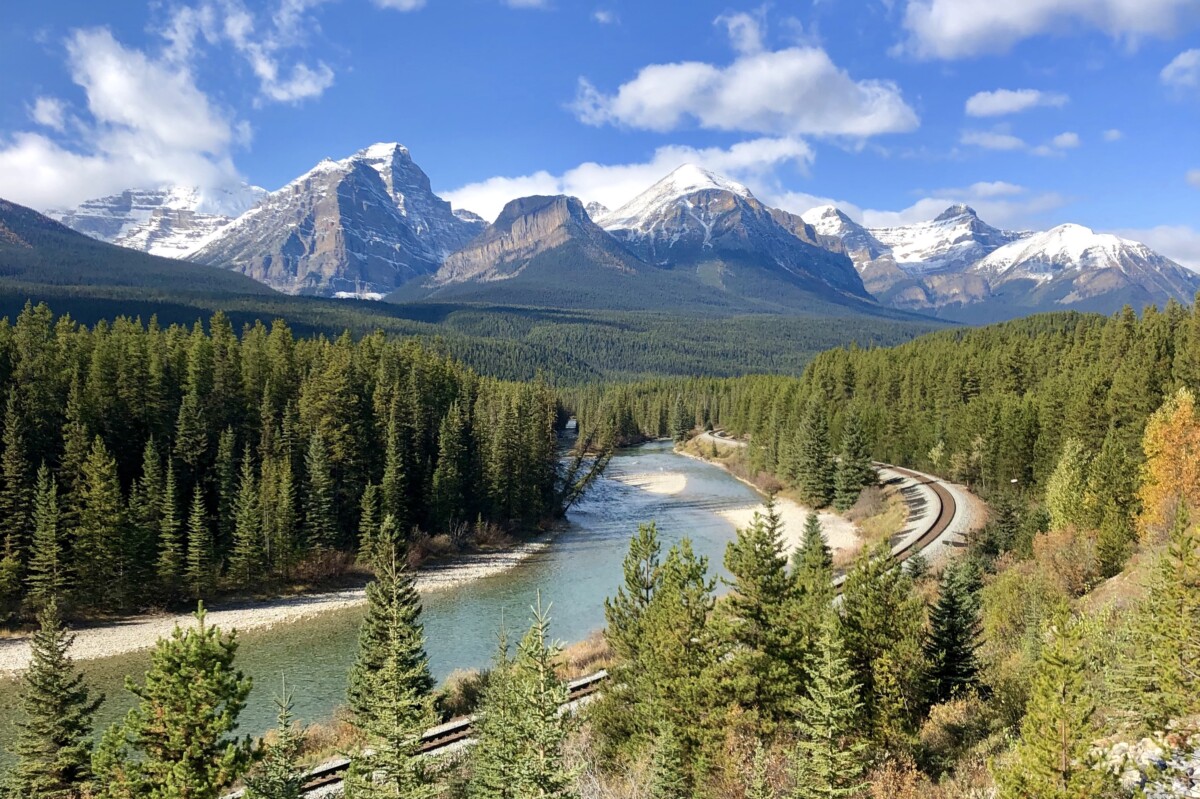
A road trip through the Canadian Rockies is unforgettable. Photo by Susan Lanier-Graham
The Prairies stretch so far that the sky becomes the main character. Saskatchewan and Manitoba roll out fields of yellow canola and endless wheat. The sun feels bigger here, rising and setting with slow drama. Driving at night, the stars turn sharp and near, and silence falls heavier than in the city.
Then there is Ontario. This province bends into so many shapes that you need days just to scratch the surface. Northern lakes hide small cabins where the air smells of pine and firewood. Southern Ontario holds vast farmlands, rivers, and that one roaring celebrity, Niagara Falls. The falls are less delicate than photographs suggest; they thunder, spray, and pulse with force you can feel in your chest.
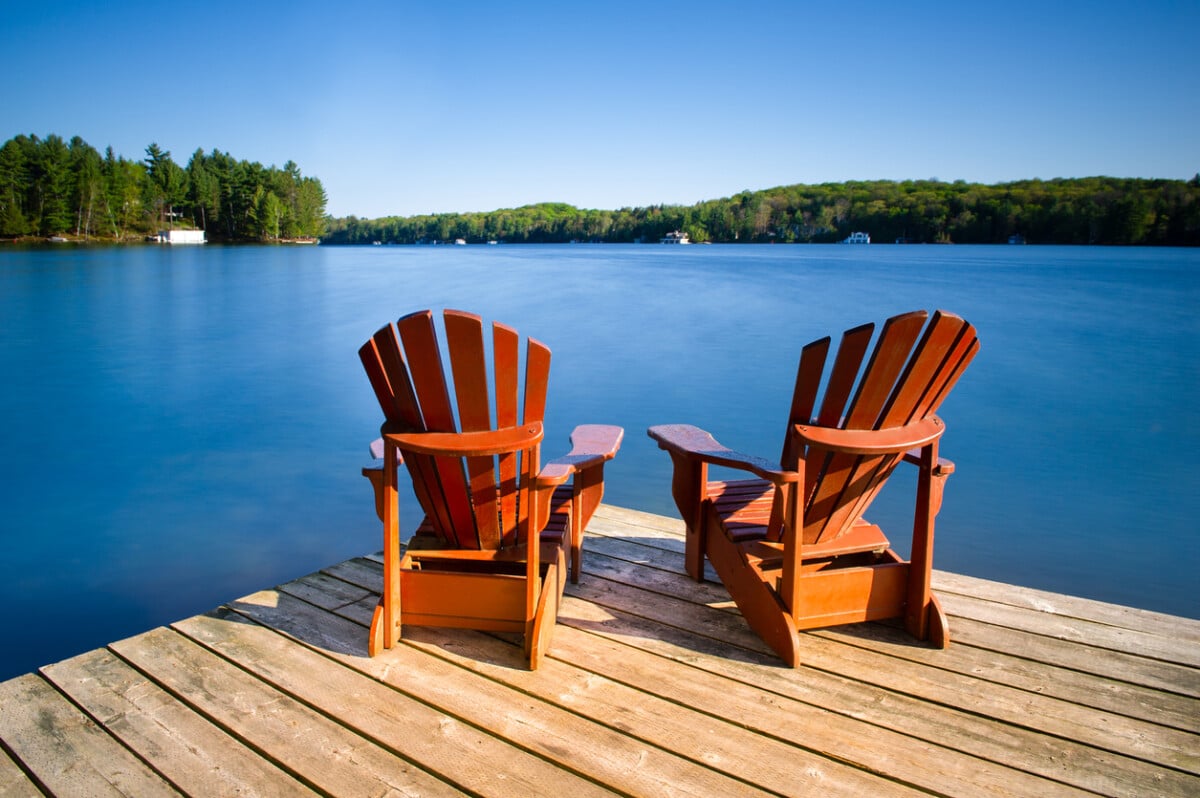
Adirondack chairs on a wooden dock on a calm lake in Muskoka, Ontario, Canada. Cottages nestled between trees are visible across the water. Photo by flyzone via iStock by Getty Image
Crossing into Quebec, the rhythm changes again. Roadside villages carry French names, and the architecture bends European. Old barns and stone houses seem to lean closer to the road, welcoming and weathered at the same time. Here, the rivers widen, pulling you east toward the Atlantic. And that eastward pull becomes part of the story itself—because the more you travel, the more you realize that the sweep from city skylines to rugged shores across Canada is not only a direction on the map but also a shift in how you experience time, space, and scale.

Old Québec with Château Frontenac on the hillside. Photo by Susan Lanier-Graham
Shores That Shape Memory
The East Coast has a texture all its own. Nova Scotia, Prince Edward Island, New Brunswick, and Newfoundland sit close to the sea, and you can feel it everywhere. Fishing boats bob in small harbours. Red cliffs drop into rolling surf. Wooden houses painted bright stand against storms with steady pride.
I once traced the Cabot Trail around Cape Breton in Nova Scotia. The road hugged cliffs, swung into valleys, and opened onto sudden ocean views. Moose wandered through the woods, and fiddle music drifted from roadside halls. The air carried salt and spruce together. It was hard to tell which was sharper.
Prince Edward Island felt softer, more intimate. Rolling farmland pushed right to the edge of red sand beaches. Potatoes grew in neat rows, and every small town had a church spire that seemed taller than logic allowed. The island felt crafted to a smaller scale, easy to breathe in and remember.
Newfoundland was rougher, with sharp cliffs and winds that refused to stop. St. John’s colored itself with bright-colored row houses, a cheerful guard against the grey Atlantic. Out on the coast, puffins swirled in the air, and waves slammed the rocks. Standing there, you understand how isolation becomes culture, how people shape their lives around the rhythm of storms and tides.
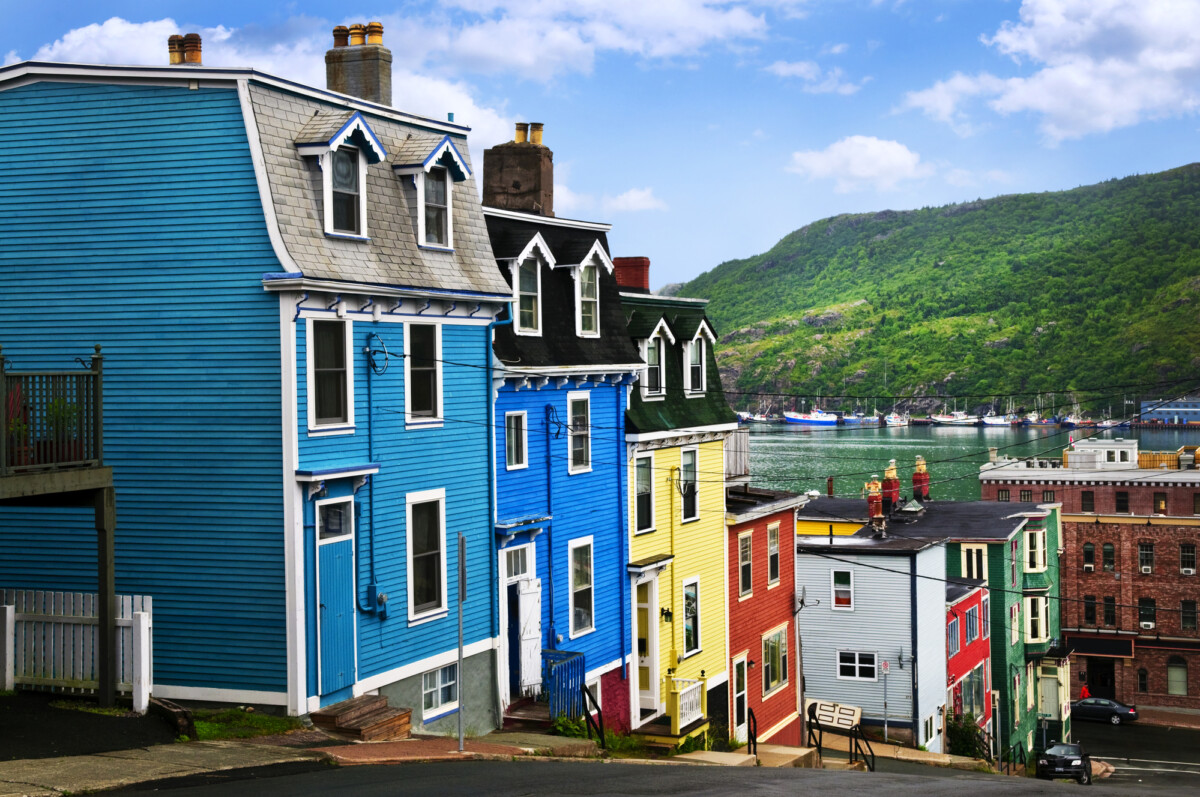
Street with colorful houses near the ocean in St. John’s, Newfoundland, Canada. Photo by elenathewise via DepositPhotos.com
A Pause in the Middle
I often think about the way Canada does not fit into one description. You can move from an urban skyline to a dirt road leading nowhere in hours. You can hear ten languages on a subway ride and then drive into an area where silence presses against the windshield. That is why moving from city skylines to rugged shores across Canada does not feel like an exaggeration. It is a map written in experiences, stretched across ten provinces and three territories. Every stop brings a new tone, and every departure leaves something behind.
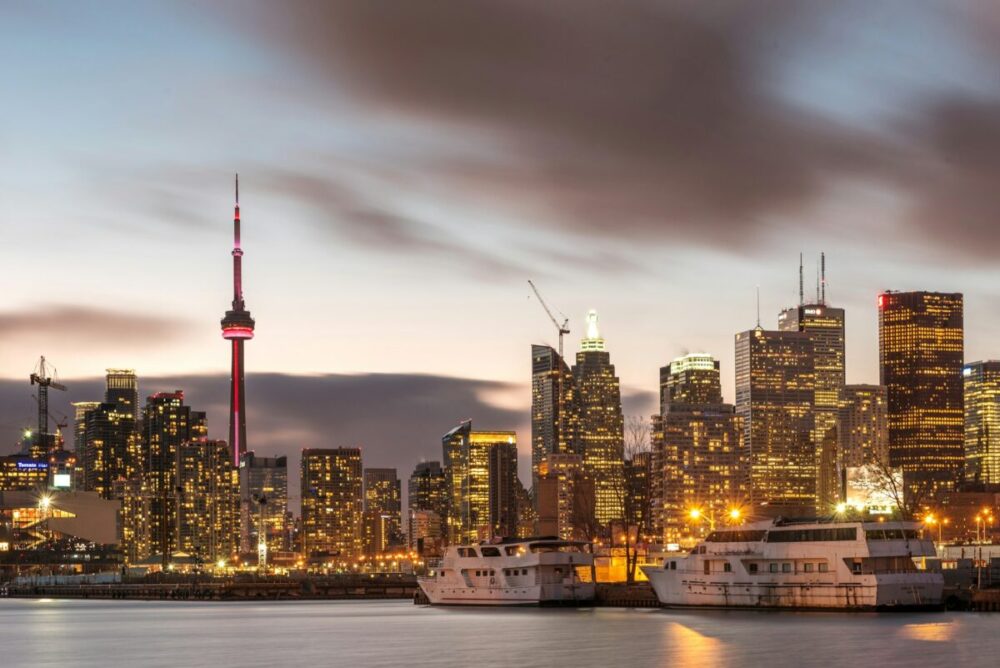
Canada’s city skylines, such as Toronto, are dazzling. Photo by Alex Shutin on Unsplash
The North That Lingers Long After
The northern territories demand patience. Yukon, Northwest Territories, and Nunavut are not quick destinations. Distances spread wide, and the weather decides the schedule. Yet the reward sits beyond words.
In Yukon, the road curves toward the Alaska border, through untouched valleys and ranges. Small towns dot the map, each with stories of gold rushes and survival. At night, the northern lights stretch overhead, curtains of green and purple that do not seem to belong to Earth.
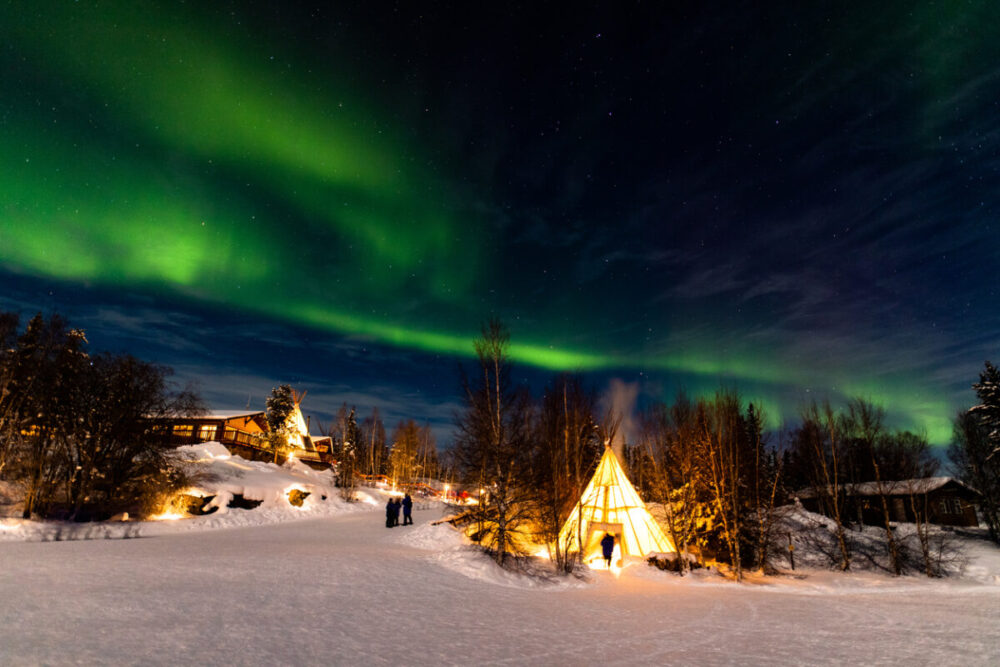
Northern Lights in Yellow Knife, Canada. Photo via iStock by Getty Images
The Northwest Territories contain the great Mackenzie River, which is vast and steady and flows through the boreal forest and tundra. Life here is tied to that river, to fishing, to hunting, to a community built strong because distance is heavy.
Nunavut lies further still. Flights bring you in, and once you step off the plane, the Arctic feels immediate. The land is rock, ice, and sky. Inuit culture holds deep roots here, expressed through art, song, and tradition that runs older than Canada itself. Standing in that space, time bends. You feel small, but in a way that fills rather than empties.
Article Related to Visiting Canada
Conclusion
Every time I cross this country, I find something new. The skyscrapers in Toronto, the peaks above Vancouver, the farm roads of Prince Edward Island, the northern lights in Yukon stack together into a memory that never stops shifting. Canada refuses to be one thing. It bends, breaks, and rebuilds itself across each province, each shore, each skyline. And that is why traveling from city skylines to rugged shores across Canada never feels finished. The road remains open, the stories keep growing, and the affection deepens with every mile.
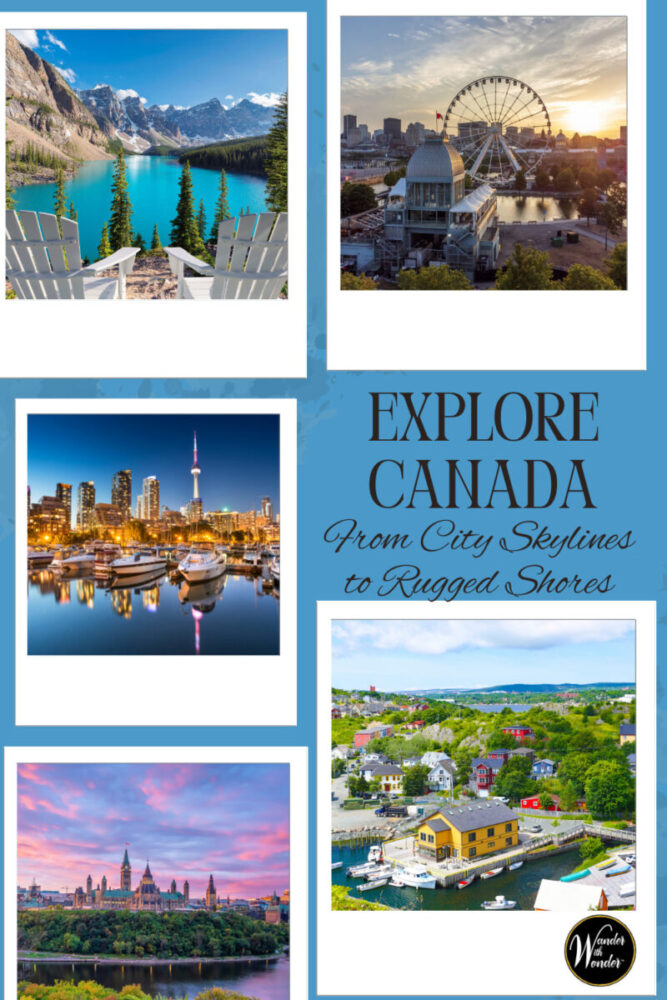
.
Please visit:
Our Sponsor
